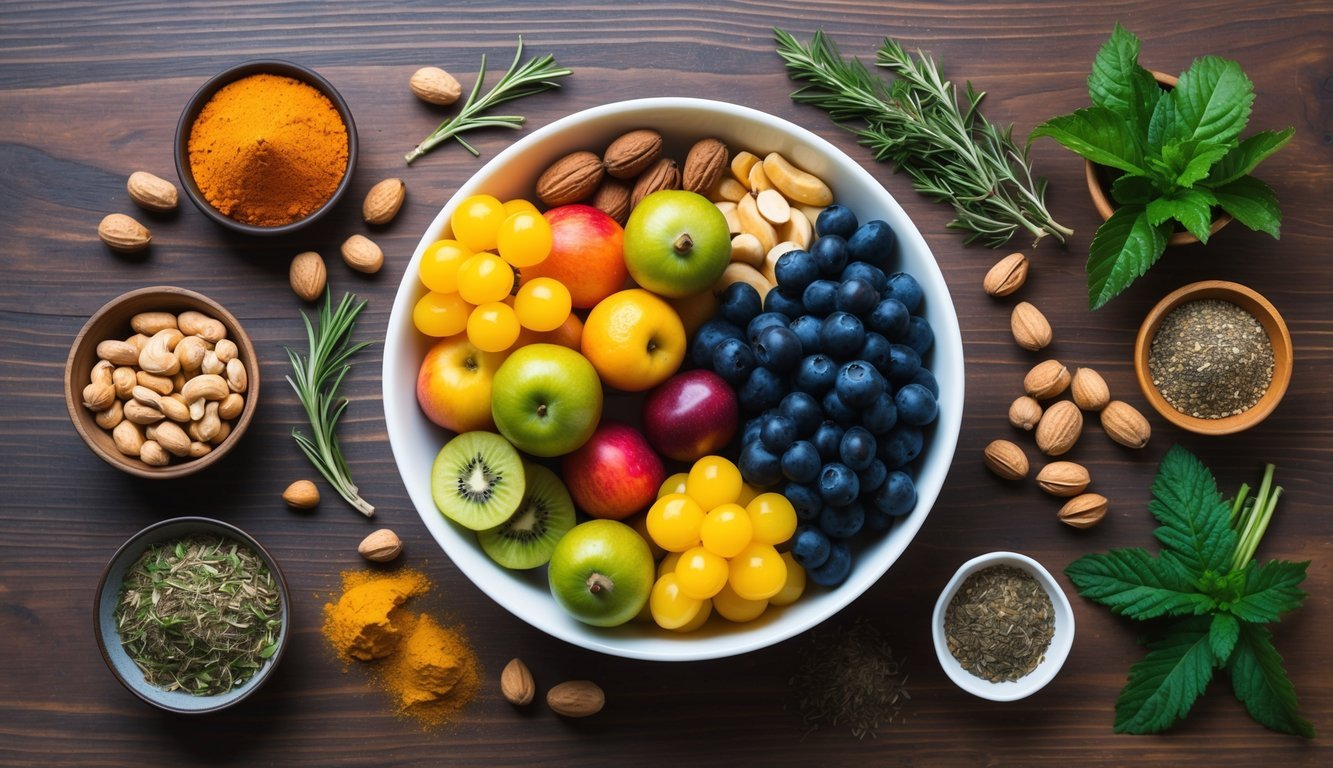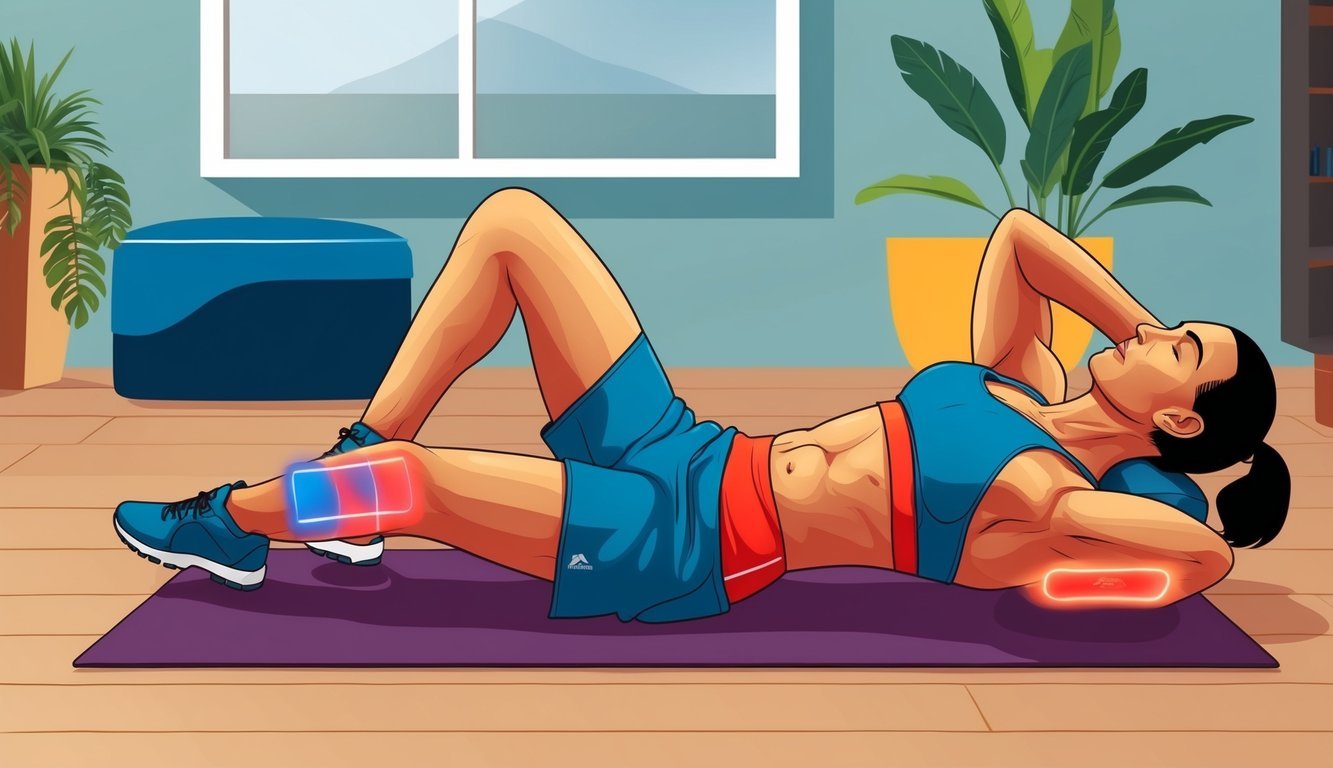After an intense workout, feeling sore is just part of the game.
I’ve been there, wondering how to get back to my routine without that lingering discomfort. One of the best ways to bounce back is by incorporating effective recovery strategies that can significantly reduce muscle soreness.

I’ve gathered some practical tips that can help anyone looking to alleviate that post-workout ache.
By focusing on recovery, we can not only enhance performance but also make the experience of working out a lot more enjoyable.
Whether you’re a seasoned athlete or just starting out, these suggestions may help you feel better after a tough session.
1) Stay Hydrated
I’ve learned that staying hydrated is crucial for minimizing muscle soreness after a workout.
When I work out, my body loses a lot of water through sweat.
If I don’t replace that lost fluid, I can end up feeling even more sore.
Drinking water throughout the day makes a big difference.
I try to keep a water bottle with me, especially before and after exercising.
It helps my muscles recover more efficiently.
Electrolytes also play a role in hydration.
Sometimes, I opt for drinks that contain them, especially after intense sessions.
This helps replenish what I’ve lost and supports muscle function.
I’ve found that the more I hydrate, the better I feel the next day.
Dehydration can lead to increased soreness, so I focus on staying ahead of it.
It’s a simple tip, but it really works for me.
2) Eat an Anti-inflammatory Snack

After an intense workout, I find that what I eat can significantly impact how my muscles feel.
Choosing snacks with anti-inflammatory properties helps reduce soreness and speed up recovery.
I often reach for foods like berries, which are loaded with antioxidants.
These can help combat inflammation in the body.
Greek yogurt with honey is another favorite of mine.
It offers protein and probiotics, which are great for muscle repair.
I also enjoy snacks like nuts or seeds.
They provide healthy fats and can help reduce inflammation levels.
Adding spices like turmeric or ginger to my smoothies not only boosts flavor but also supports muscle recovery.
For something refreshing, I like watermelon or a glass of tart cherry juice.
Both are hydrating and may aid in reducing post-exercise soreness.
Incorporating these foods into my post-workout routine makes a noticeable difference in how I feel.
3) Get a Good Night’s Sleep

I can’t stress enough how important sleep is for muscle recovery.
Quality rest helps my muscles repair after a tough workout.
It’s during sleep that the body works its magic, patching up those tiny tears in muscle fibers.
I aim for 7 to 9 hours of sleep each night.
This is the sweet spot for allowing my body to rejuvenate.
If I skimp on sleep, I definitely feel the effects in my muscles the next day.
When I get enough shut-eye, I notice I’m less sore and more energized.
It’s also crucial for my overall mood and health.
I make it a point to listen to my body; if I’m feeling extra sore, I know it’s time for a solid night’s sleep.
Creating a calm bedtime routine helps too.
I try to wind down before bed, maybe with a book or some light stretching.
This way, I can maximize my rest and wake up ready to tackle my next workout.
4) Try Foam Rolling
Foam rolling is one technique I’ve found really helpful for reducing muscle soreness.
It feels like giving myself a mini massage after a tough workout.
When I roll out my muscles, I usually spend about 30 to 90 seconds on each area.
This helps release tension and improve blood flow, which can really speed up recovery.
Research shows that foam rolling can reduce muscle soreness and improve my range of motion.
It’s also a great way to target those tender spots that build up after intense training.
I often focus on areas like my quads, hamstrings, and glutes.
Starting with 10 to 30 seconds on each spot works best for me, gradually increasing the time as needed.
I’ve also found that incorporating deep breathing while stretching helps me relax and release tension more effectively.
This practice not only aids in muscle recovery but also seems to improve concentration and focus during my workouts.
Over time, dedicating extra attention to these routines has enhanced both my flexibility and overall performance.
Incorporating foam rolling into my routine makes a noticeable difference.
It not only helps me feel better post-workout but also prepares my muscles for the next session.
5) Wear Compression Gear
Wearing compression gear has become a popular choice for reducing muscle soreness after workouts.
I find that these garments provide support during and after exercise, helping my muscles recover more effectively.
When I wear compression clothing, it increases blood flow to my muscles.
This extra circulation delivers oxygen and nutrients, which can make a difference in my recovery time.
Plus, it reduces muscle vibration, which helps minimize soreness.
I use compression sleeves or tights, depending on the muscle groups I focused on during my workout.
They’re comfortable and can be worn while I’m training or relaxing afterward.
It’s important to choose the right size and fit for the best results.
This way, I can enjoy the benefits without feeling restricted.
Listening to my body is essential, so I adjust my use of compression gear based on how I feel after each workout.
6) Include Active Recovery

Active recovery is a great way to help ease muscle soreness after a tough workout.
It involves engaging in low-intensity activities that promote blood circulation without straining your muscles.
I find that going for a light jog or a walk can really make a difference.
It keeps my body moving while allowing my muscles to recover.
Yoga is another favorite of mine.
The stretching helps release tension and can be incredibly refreshing both physically and mentally.
Practices like yin yoga are particularly beneficial for recovery.
I also love incorporating foam rolling into my routine.
It allows me to target specific areas that feel tight and requires gentle pressure to release muscle knots.
It’s important to remember that active recovery won’t replace complete rest.
Both elements play a role in effective recovery.
Balancing light workouts with rest days helps me feel my best.
7) Do Gentle Stretching

After an intense workout, I find that gentle stretching can really help with muscle soreness.
It helps to reduce stiffness and improve flexibility, making movement feel a bit more comfortable.
I usually start with some simple stretches for the major muscle groups I worked on.
Holding each stretch for around 15-30 seconds lets my muscles gradually loosen up.
This isn’t about pushing myself too hard—it’s just about easing into it.
Stretching stimulates blood flow, which can help with recovery.
I often notice that incorporating light stretching into my post-workout routine makes a big difference.
Foam rolling is another great option if you enjoy a little self-massage after exercising.
Overall, gentle stretching is a simple way to aid my muscle recovery and prepare for the next workout.
Keeping things relaxed and easy makes it much more enjoyable.
8) Utilize Heat and Cold Therapy

I often turn to heat and cold therapy to tackle muscle soreness after a tough workout.
Both methods can be surprisingly effective.
When I apply heat, it helps by relaxing my muscles and increasing blood flow.
This can be especially beneficial right after exercising.
I usually use a heating pad or take a warm bath for about 20 minutes at a time.
On the flip side, cold therapy works wonders too.
After a heavy workout, I sometimes ice my sore muscles.
It helps reduce inflammation and numb the pain.
I typically apply ice for 10 to 15 minutes, making sure to wrap it in a cloth for comfort.
Using these therapies can be part of a solid recovery plan.
Whether I need to soothe tight muscles or calm inflammation, heat and cold have become my go-to options.
Combining these methods with proper hydration and rest enhances my recovery process significantly.
9) Consider a Massage

After a tough workout, I often find that a good massage can really help.
It’s not just about relaxation; massage can reduce soreness and inflammation in my muscles.
I prefer to book a session with a skilled therapist who knows how to target sore spots.
They can help release tension and improve my recovery time.
Even a brief massage can work wonders.
If I can’t get to a professional, self-massage is another option.
I use tools like foam rollers or massage balls to work on tight areas.
These methods can provide similar benefits and are super convenient.
Incorporating massage into my post-workout routine has become essential.
I notice a difference in how quickly I bounce back for my next session.
It’s definitely worth considering.
10) Add Some Yoga Moves

I’ve found that incorporating yoga moves into my routine really helps with muscle soreness.
Gentle stretches can relieve tightness and improve flexibility.
After an intense workout, a few basic yoga poses work wonders.
Poses like Child’s Pose or Downward Dog can soothe tired muscles and enhance recovery.
They help release tension and promote blood flow.
I also make sure to stay hydrated during my yoga sessions.
I sip water regularly to flush out toxins and keep my body functioning well.
Even a short, focused yoga session can make a difference.
I feel more refreshed and less stiff after adding these moves to my routine.
It’s a simple way to ease soreness and enjoy the benefits of both yoga and a solid workout.
Understanding Muscle Soreness
Muscle soreness is a common experience after intense workouts.
It’s important to grasp the underlying causes and how it differs from an actual injury.
Knowing this can help me manage my recovery better.
What Causes Soreness
Muscle soreness, especially after exercise, typically comes from Delayed Onset Muscle Soreness (DOMS).
This soreness arises from microscopic tears in muscle fibers.
These tears occur during strenuous activities, particularly when I perform eccentric movements, like lowering a weight.
As my muscles repair, they become stronger, but the process can lead to discomfort.
Other factors that contribute include:
- Intensity and Duration of Exercise: Higher intensity and longer durations can increase soreness.
- Lack of Warm-Up: Skipping a proper warm-up can make soreness more likely.
- Hydration Levels: Dehydration may exacerbate muscle soreness.
Keeping these points in mind allows me to anticipate and manage soreness effectively.
Difference Between Soreness and Injury
Recognizing the distinction between muscle soreness and injury is crucial for my training routine.
Muscle soreness usually feels like a dull ache or stiffness and may peak 24 to 48 hours post-workout.
In contrast, an injury often involves sharp pain, swelling, or bruising, and may hinder movement.
Signs of injury include:
- Persistent Pain: If the pain lingers beyond a few days.
- Swelling or Redness: Indicates potential injury rather than soreness.
- Loss of Function: Difficulty using the affected muscle normally.
Being aware of these differences helps me listen to my body and respond appropriately during my fitness journey.
Recovery Techniques
Recovering after a tough workout is essential for reducing muscle soreness and getting back to the gym.
Two key elements in my recovery routine are hydration and rest.
Let’s dive into how each plays a vital role in muscle recovery.
Role of Hydration
Staying hydrated is crucial for my recovery.
Water helps transport essential nutrients to the muscles and flush out toxins accumulated during exercise.
I aim to drink 1.5 liters for every kilogram lost while working out.
This often translates to about three cups of fluid for every pound lost.
When I feel sore, I also consider adding electrolyte-rich drinks to replenish minerals like potassium and sodium.
Staying hydrated can significantly reduce the severity of muscle soreness, allowing me to bounce back quicker.
Keep a water bottle handy during workouts to remind me to hydrate frequently.
Importance of Rest
Rest is just as critical as hydration.
I make sure to give my muscles enough time to recover, particularly after intense workouts.
For high-intensity sessions, I aim for 24 to 72 hours of rest, depending on the training intensity.
Skipping rest days can lead to overtraining and increased soreness.
On days I don’t work out, I might include light activities like walking or yoga to keep my body moving without straining my muscles.
Prioritizing rest not only helps with recovery but also enhances my overall performance in future workouts.
Nutritional Support for Recovery
After an intense workout, what I eat can play a vital role in how quickly I recover.
Focusing on the right nutrients helps my muscles heal and reduces soreness.
Two key areas to consider are protein-rich foods and anti-inflammatory options.
Protein-Rich Foods
To promote muscle repair, I aim to consume high-quality protein sources after exercising.
Protein is essential for muscle recovery because it provides the building blocks my muscles need.
Good options include:
- Chicken: Lean and packed with protein.
- Fish: Especially salmon, rich in omega-3 fatty acids, which support muscle recovery.
- Beans: They provide protein along with fiber and other nutrients.
- Greek Yogurt: A delicious way to boost my protein intake.
I try to include around 20-30 grams of protein within 30-60 minutes post-workout.
This timing maximizes muscle repair and growth.
Pairing protein with carbohydrates enhances the replenishment of glycogen stores.
A smoothie with protein powder and fruit is one of my favorites for recovery.
Anti-Inflammatory Foods
Incorporating anti-inflammatory foods into my diet helps minimize soreness and promotes healing.
These foods reduce inflammation in the body, making recovery less painful.
Some of my go-to options include:
- Berries: Blueberries and strawberries are rich in antioxidants.
- Turmeric: I often add it to smoothies or dishes because it’s known for its anti-inflammatory properties.
- Green tea: I sip it regularly for its anti-inflammatory effects because it’s loaded with beneficial compounds.
- Leafy greens: Spinach and kale help provide essential nutrients.
Including these foods in my meals can make a significant difference.
I find that focusing on nutritional support not only helps with muscle soreness but also improves my overall performance.

